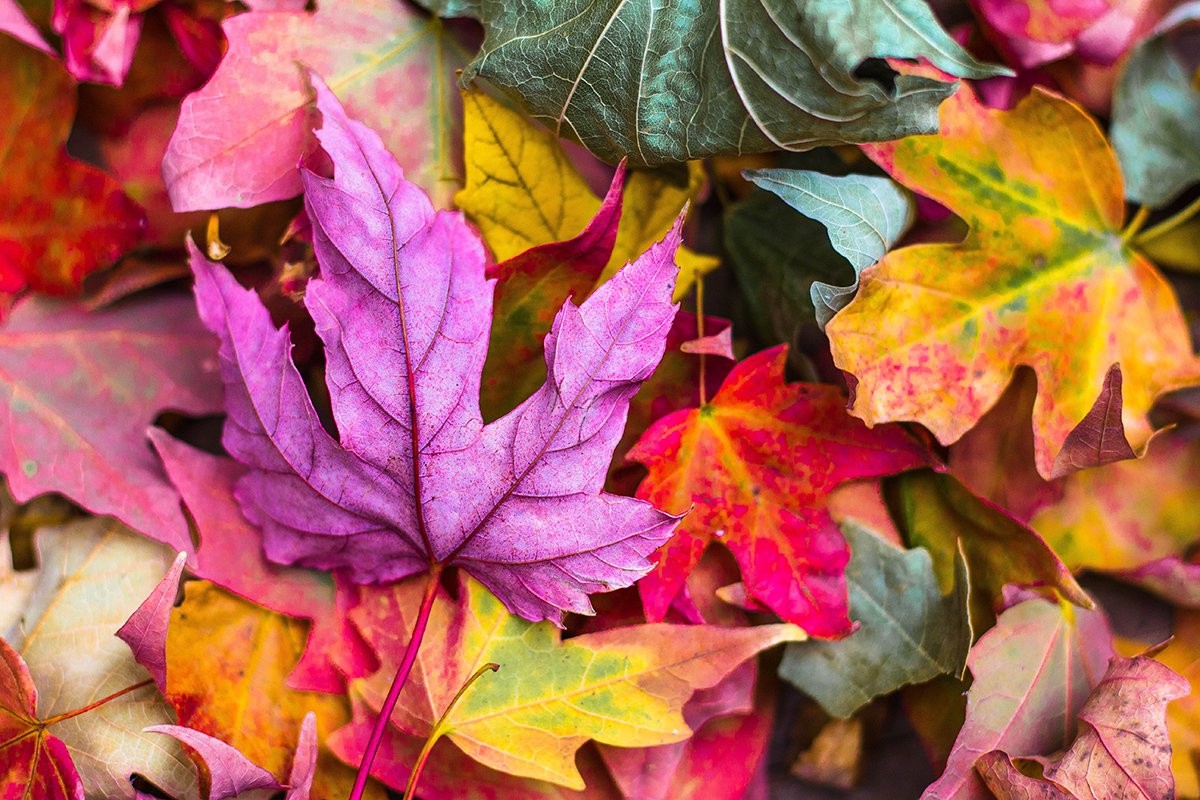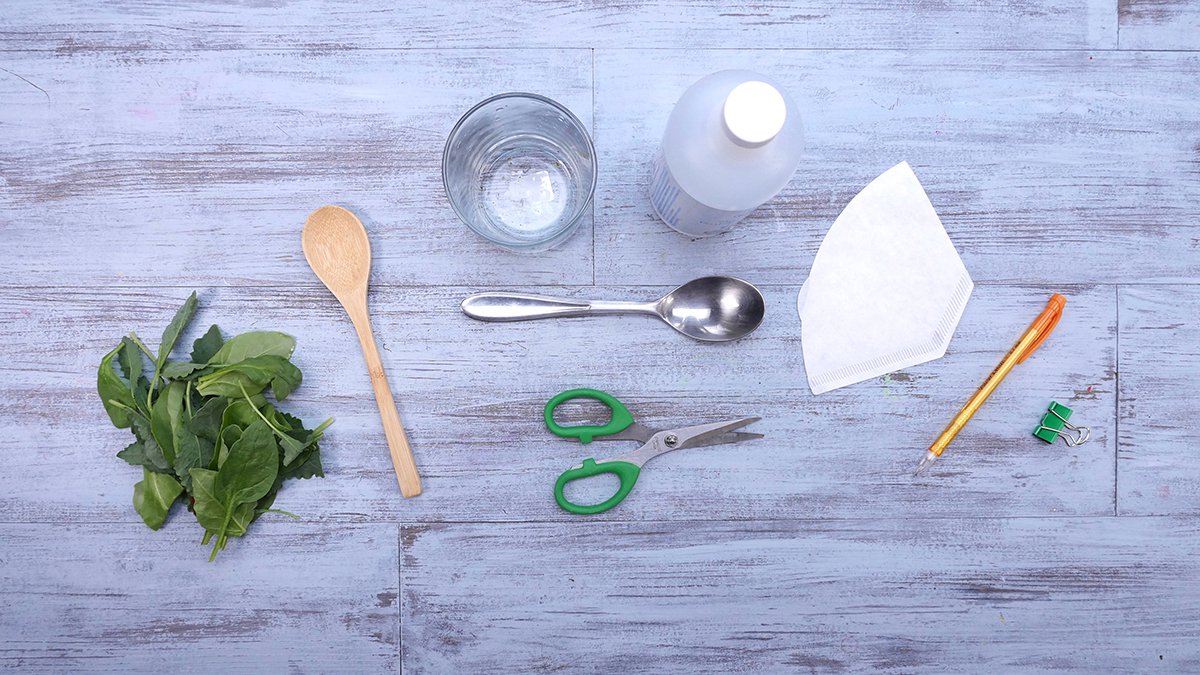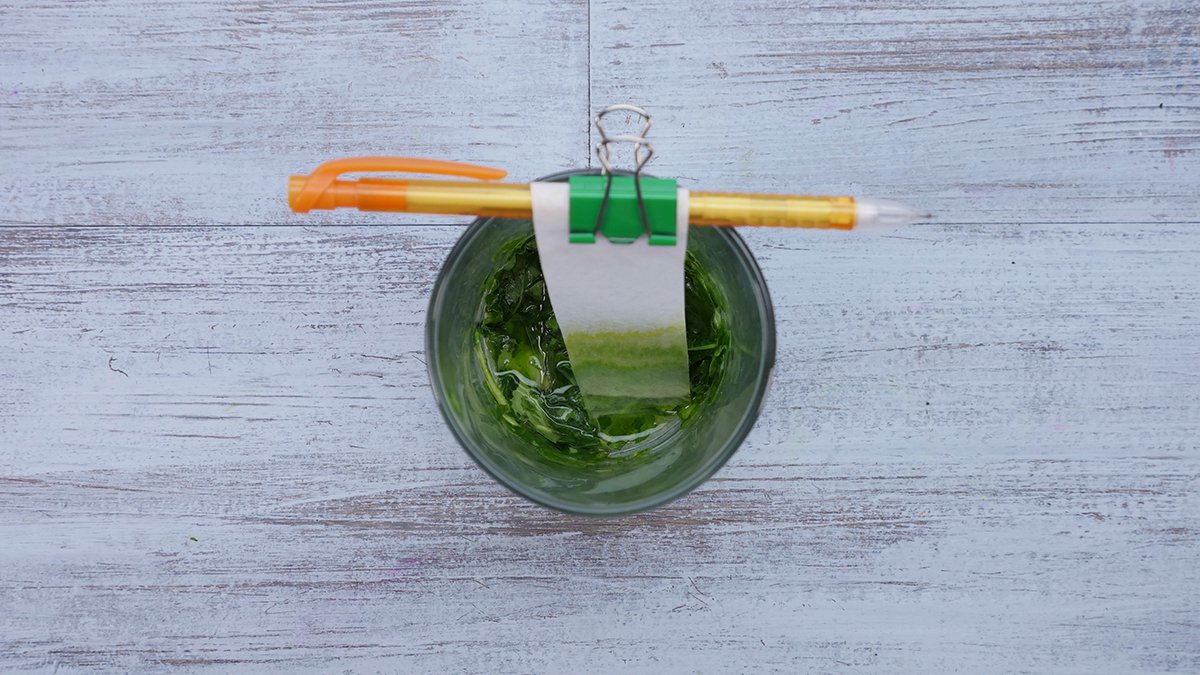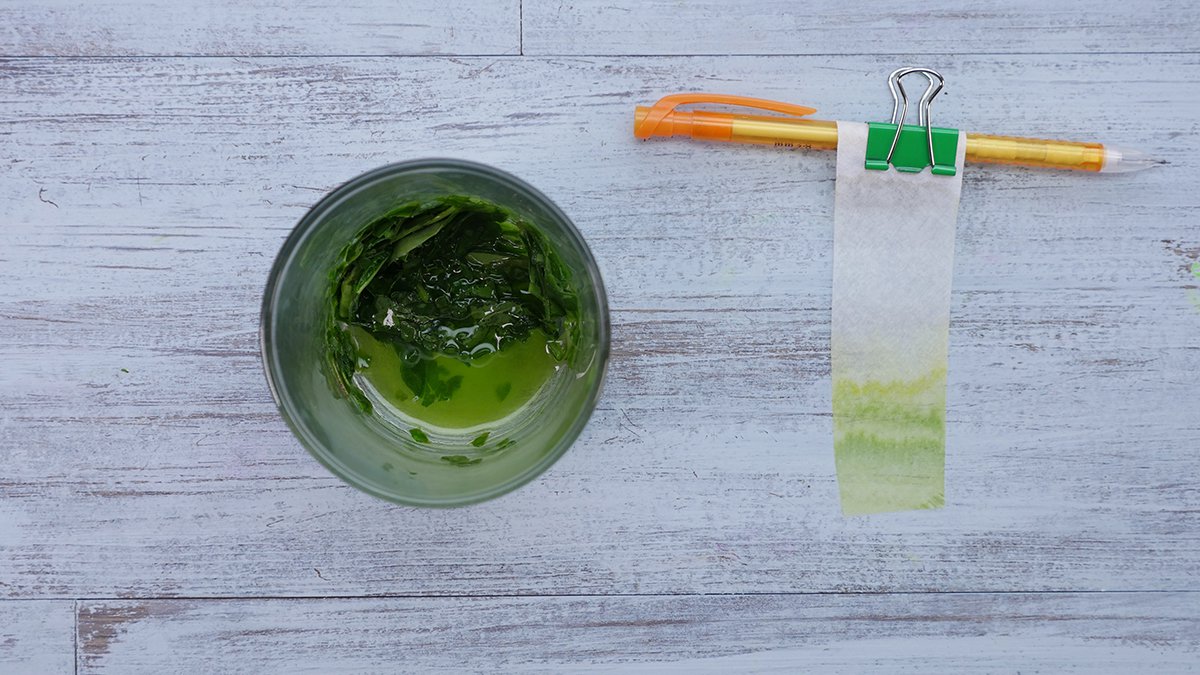
Every fall, I look forward to the beautiful colours as the green leaves on the trees change to yellow, orange, brown, and red. But why does this happen?
To understand why leaves change colour, you need to understand why they’re green to begin with. Most colours in living things are caused by chemicals called pigments. Leaves are green because they’re filled with a green pigment called chlorophyll (clore-oh-fill), which plants use to get energy from the sun.
Leaves contain other pigments too, but you usually can’t see them because there’s just so much chlorophyll. Here’s an experiment you can do to separate out the different colours in leaves.
What you need:
- Green leaves
- Jar or drinking glass
- Isopropyl alcohol or nail polish remover
- Wooden spoon
- Absorbent white paper (you can use blotting paper, paper towels, or coffee filters)
- Scissors
- Pencil
- Clothespin or binder clip

First, collect some green leaves. If all the leaves in your neighbourhood have already changed colour, try using spinach leaves from the grocery store. Tear the leaves into small pieces and drop them into the bottom of the glass.
Get an adult to help you with this next part. Add about a tablespoon of rubbing alcohol or nail polish remover, enough to cover the torn-up leaves. Then use the blunt end of a wooden spoon to mash the leaves and the solvent into a paste.
Use the scissors to cut your absorbent white paper into a strip about an inch wide and about as tall as the glass. Wrap one end around the pencil, using the clothespin or binder clip to hold it in place, and lay the pencil horizontally across the top of the glass, so that the bottom centimetre of the strip is in the liquid at the bottom.

Now, wait for about an hour. It could take more or less time depending on what kind of solvent and paper you used. The solvent will work its way up the strip of paper, bringing the different pigments with it, and spreading them out.
Pull the strip out and let it dry. The result should look something like this:

Look how much more green there is than any other colour! That’s because the leaves contain more chlorophyll than any other pigment. The other colours are always there, but you usually can’t see them because they’re washed out by the green.
In the fall, when the weather gets cooler and the days get shorter, plants stop collecting energy from the sun. They stop making new chlorophyll, and the chlorophyll they already have breaks down, so the green colour disappears. What gets left behind are the other pigments that you usually don’t see.
This kind of experiment is called chromatography (crow-ma-tog-ra-fee), and you can use it to separate the colours in other things too. Try it with black ink – you’ll be surprised!
Don’t forget to follow us on Twitter, Instagram, Pinterest, and Facebook!
 Contributor
Contributor
Grant Harding is a puppeteer with a degree in biology and a passion for education and the environment. Follow Grant on Twitter, or check out his website.
Original content © 2018 Super Simple. Not to be reprinted without express written permission. Terms of Service.

